Pillaiyar, the Remover of obstacles
Ganesha, the elephant-headed god known as Pillaiyar in Tamil, is probably the best known Indian god in the West. He’s known for his jolliness and round belly, a sign of his love for sweets. It is believed that he wrote the great epic the Mahabharata, dictated to him by the sage Vyasa.

Ganesha, the elephant-headed god known as Pillaiyar in Tamil, is probably the best known Indian god in the West. He’s known for his jolliness and round belly, a sign of his love for sweets. It is believed that he wrote the great epic Mahabharata, dictated to him by the sage Vyasa, with one of his broken tusks – hence the name Ekadanta (he who has one tooth). His vehicle is a mouse, symbolising egoism and patience. His large ears, compared to winnowing baskets, separate and throw to the wind, the dust of our terrestrial illusions so as to keep only that of value. It is said that his trunk is curved because it avoids obstacles.
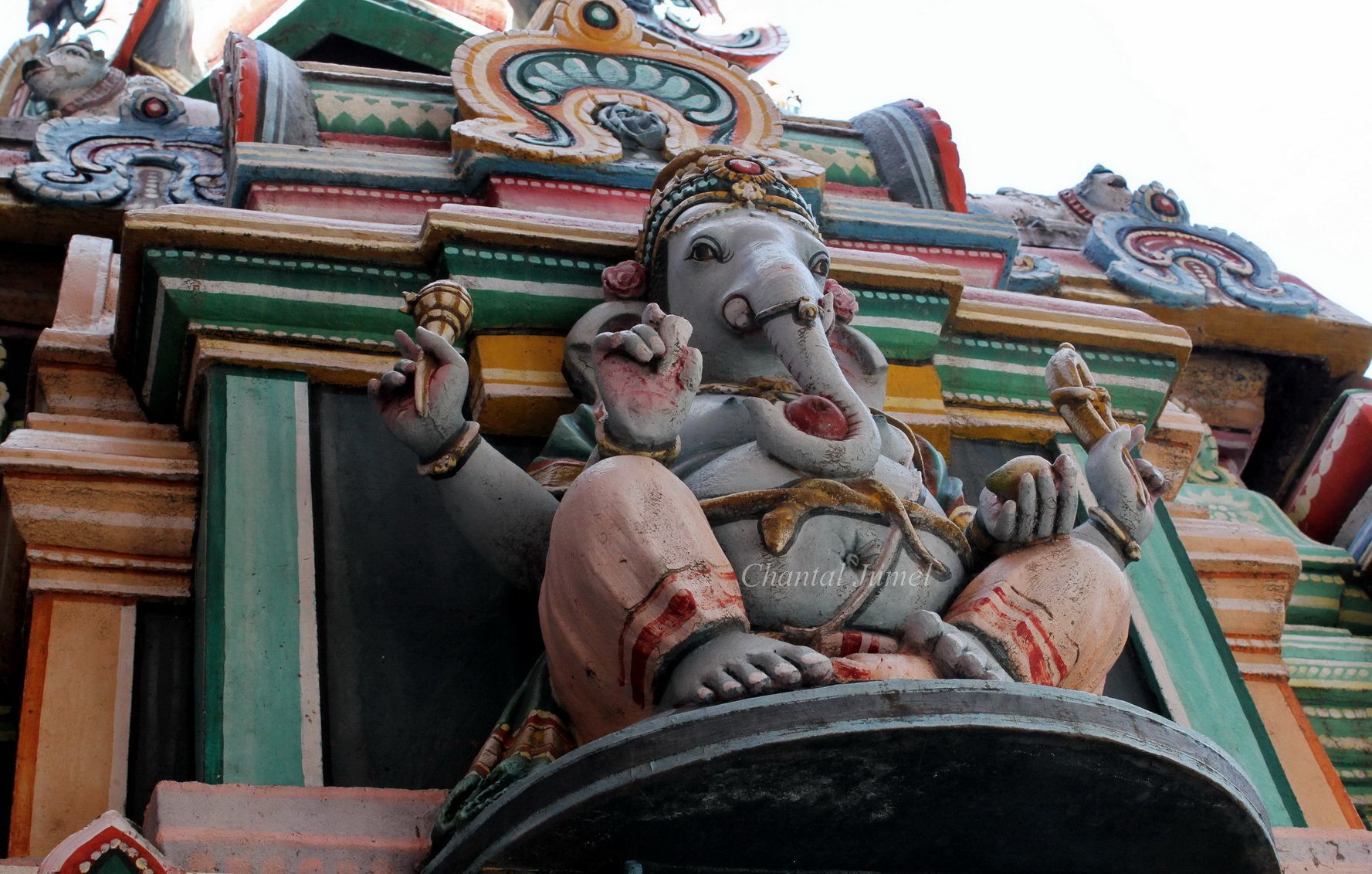



A popular legend tells the story of how Parvati, the wife of Shiva, was surprised by her lord when he entered the house while she was taking a bath. Annoyed at not having a servant to keep an eye on things, she decided to sculpt the image of a child with the ointments she used to anoint her body. After giving him life, she asked him to guard her door and forbid entry to anyone who appears. Shiva arrived and was surprised to find a young boy at the door. He asked him to move out of the way and when he refused, cut off his head. Parvati was distraught and begged him to bring her son back to life. Shiva ordered that the head of the first living being found be brought to him. This is how the god got his elephant head. To make amends, Shiva recognised Ganesha as his son, and named him the leader of the ganas, an unruly gang of spirits.

As Vigneswara, ‘the remover of obstacles’ , he is worshipped by shopkeepers, travellers, students, couples to be married, academics, and thieves, because he brings good luck and averts misfortune.

During the ninth month of Margazhi (mid-December to mid-January), young women of marriageable age place a pumpkin flower in a small pile of cow dung in the centre of the kolam. This small mound moulded with their hands is an offering to Pillaiyar. With this gesture they hope to find a partner with the support and blessings of the elephant-headed god. Ganesha is also a divinity associated with the primordial sound of OM. The way this sacred sound is written, in Sanskrit as well as in Tamil, resembles the head and trunk of the god seen in profile.


Apart from festival days, Ganesha occupies a discreet place in the household, and is symbolised by a swastika. The word swastika means ‘That which is good' in Sanskrit. It resembles a cross with its ends bent at right angles, to the right or left. This ancient symbol is found in different forms in most of the world’s civilisations.

His image is found not only among the other household religious idols but also in businesses, roadside stalls and street chapels, offices, and even on the dashboards of taxis and auto-rickshaws.




In addition to the daily prayers offered to him, his birth is celebrated during Pillaiyar Chaturti, a popular festival which takes place during the lunar month of avani (mid-August to mid-September). Each family buys a clay painted statue from one of the many for sale in neighbourhood markets, which is placed on a banana leaf covered with rice.

However, this festival has also been affected by concerns around pollution. The immersion of the idols takes a toll on water bodies. The festival waste, from plastic wrappers to decorations litters the streets. Nowadays more and more eco-friendly Ganesh made of are sold.


The altar is decorated with kolams, flowers, and offerings in the form of round dumplings called kozhukkattai prepared specially for Ganesha. Once the prayers and offerings have been made, the statue is immersed in the sea, a pond, or a river.


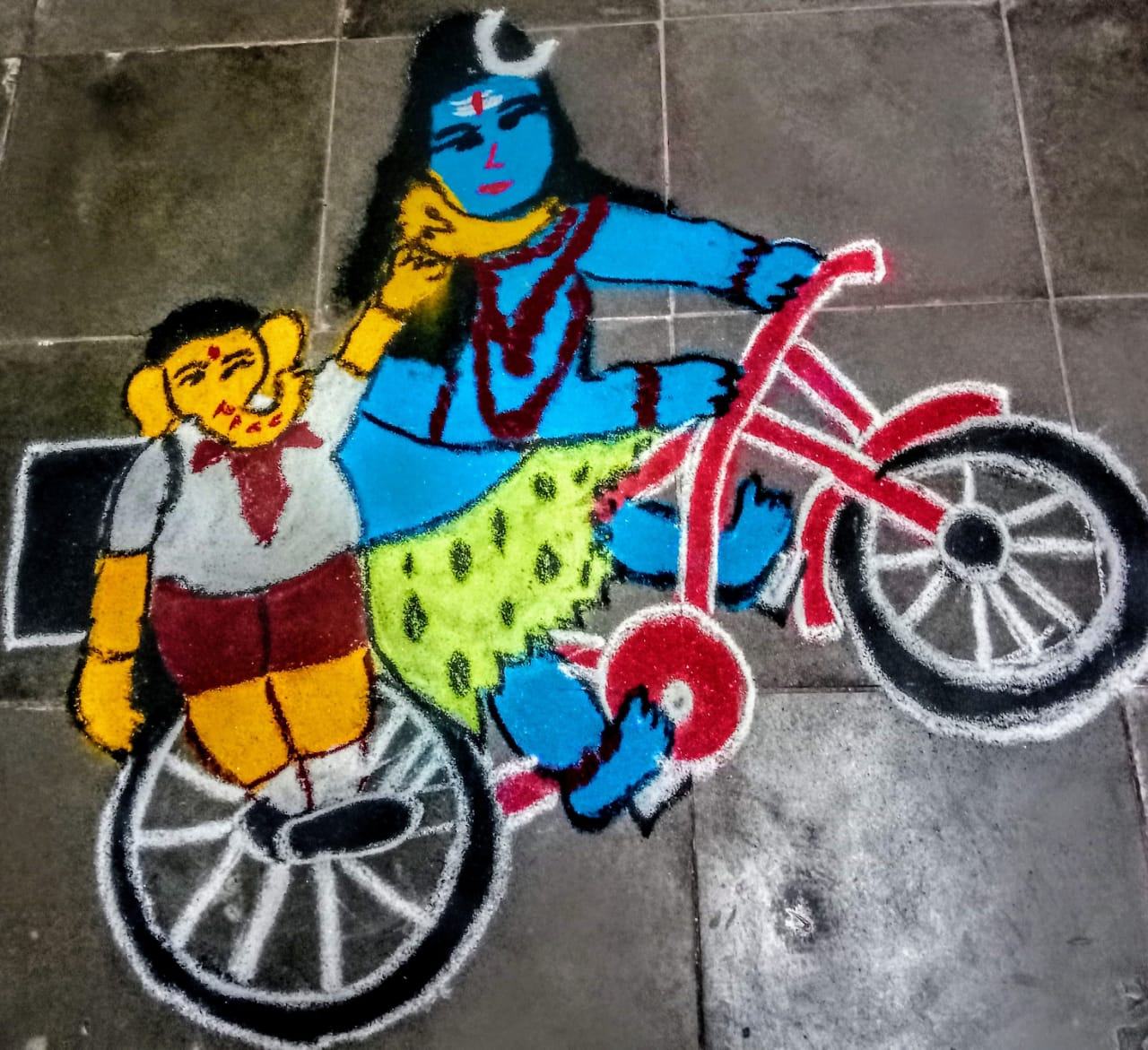

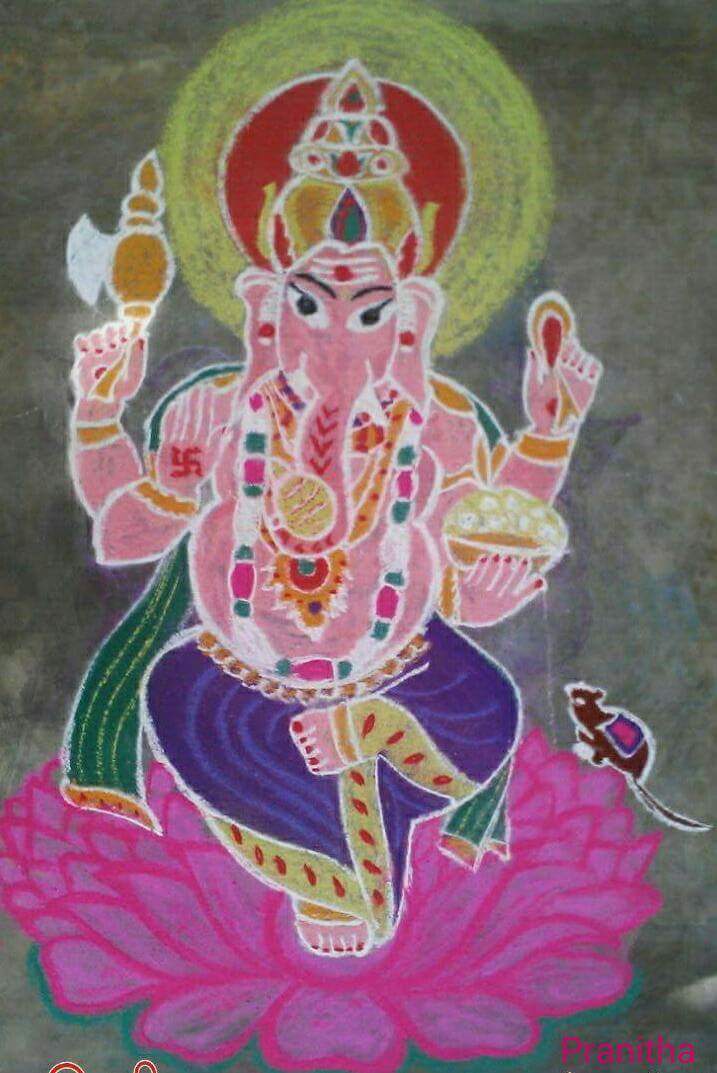
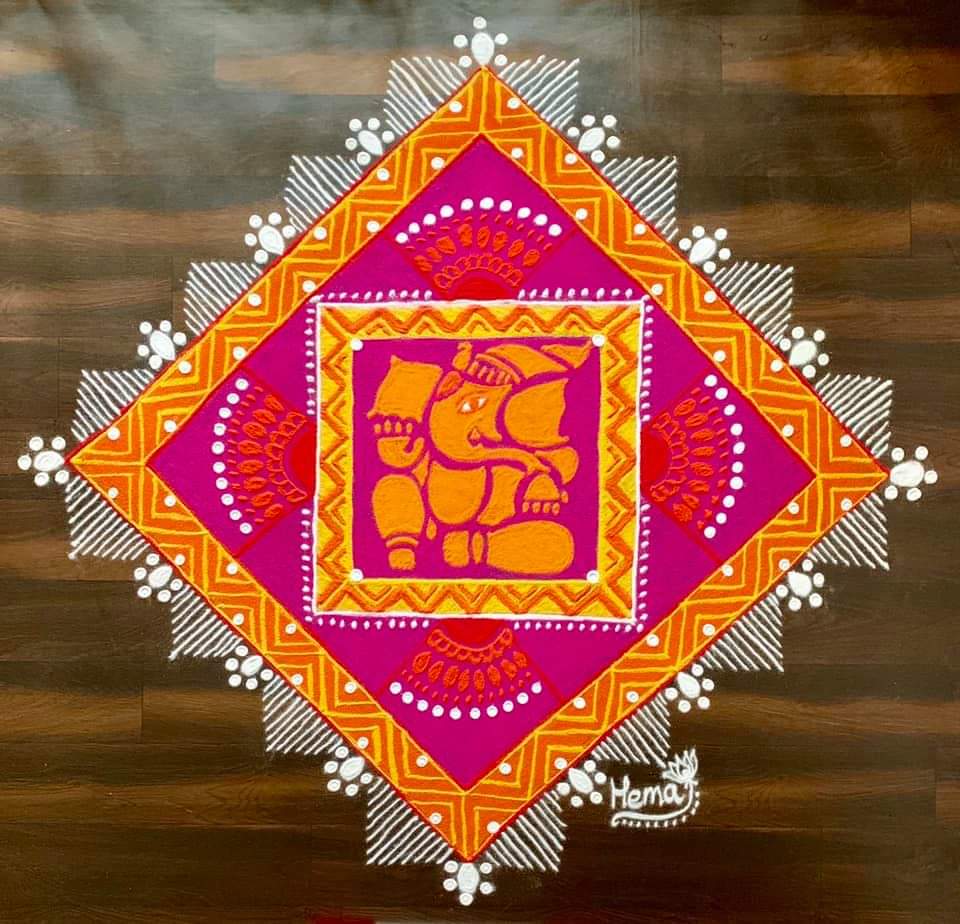









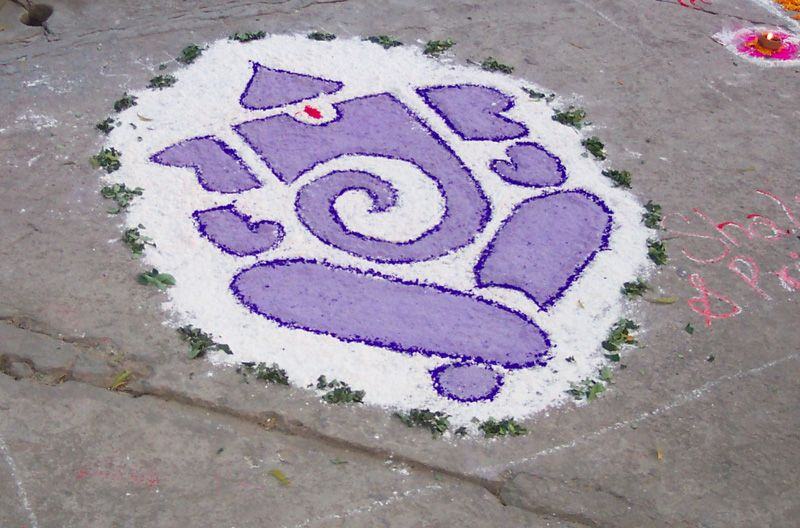
Art performances, particularly in South India often start with the composition Sri Mahaganapathim. Ganesha's role as the Lord of beginnings, is traditionally worshipped at the start of ventures by dancers and musicians.
You may enjoy watching Bal Ganesh, a 2007 computer-animated musical feature film directed by Pankaj Sharma. The film is about the adventures of Ganesha when he was a baby and how his mother conceived him. (Bal Ganesh (English) - Kids Animated Movies - HD)
